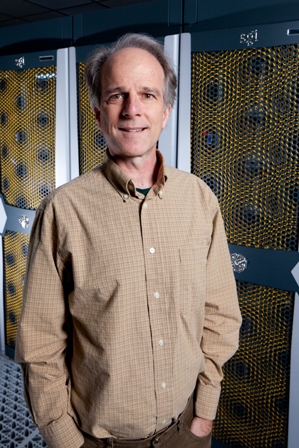Exploring Climate Change in the Arctic with Mike Winton
 GFDL scientist Mike Winton enjoys the sense of discovery his work yields. The oceanographer, whose research is directed toward fathoming climate change in the Arctic, says each work day is an adventure unto itself and exposes him to unique perspectives every day.
GFDL scientist Mike Winton enjoys the sense of discovery his work yields. The oceanographer, whose research is directed toward fathoming climate change in the Arctic, says each work day is an adventure unto itself and exposes him to unique perspectives every day.
Winton earned a bachelor of arts in Mathematics and Economics from the University of Michigan in 1979 and a Master of Science degree in Computer Science from Purdue University in 1982. The scientist completed his studies in 1993, earning a Ph.D. in Atmospheric Sciences from the University of Washington. He came to GFDL in 1995.
An author of several scientific publications, Winton’s research interests range from sea ice modeling and air-sea fluxes and their climatic effects to polar climate and climate change.
In the following interview, he discusses why understanding climate shifts in the Arctic region matters and the climate modeler he admires most.
Why does your research matter?
My research is directed toward understanding the large climate change underway in the Arctic. Of course to characterize this change as “large” requires a quantitative expectation. This is where climate models come in. Using climate models, my work addresses questions like: What do various feedback mechanisms contribute to the change? How certain are they? Are there tipping points? Are our simulations consistent with the observed pace of change? These questions must be answered in order to predict what will happen to the Arctic in coming decades and to decide upon responses.
What do you enjoy the most about your work?
I enjoy the feeling of discovery — of understanding a little better the way the global climate machine works. The pursuit of this understanding is an adventure that requires acquisition of new skills, discussing new ideas with new people, and looking at things from new perspectives. It’s also fun that the public is so interested in knowing what we find out.
Where do you do most of your work? In a lab? In field studies?
In an office, sitting in a chair at a desk. It’s not the surroundings that make the work exciting.
What in your lab could you not live without?
The big computer and archival storage system is central to our work as modelers. Not having these would set us back about one hundred years (see below).
If you could invent any instrument to advance your research and cost were no object, what would it be? Why?
I’m always hoping for faster, cheaper computers. It’s the easiest way to make our models better.
When did you know you wanted to pursue science?
Not until I stumbled across books on meteorology and climate in my 20s. The idea that you can apply basic scientific principles to understand and predict a system as heterogeneous and complex as the earth captured my interest and has held onto it.
What’s at the top of your recommended reading list for someone wanting to explore a career in science?
For those interested in climate science I recommend David Archer’s “The Long Thaw” for a quick start. The IPCC “Physical Science Basis” reports can be heavy going but they give you a good sense of the questions climate research is currently addressing.
What is your personal favorite book?
One of them is “The Long Winter” by Laura Ingalls Wilder. It’s a remarkable story of hardship and perseverance in the Dakota Territory during the winter of 1880 from a child’s perspective.
What part of your job as a NOAA scientist did you least expect to be doing?
I did not expect to be GFDL’s sea ice modeler. I came to GFDL as an oceanographer but we needed someone to make a sea ice model so I took that on.
Do you have an outside hobby?
I like reading history, especially economic history, to try to understand how we have arrived at the present, very dynamic point in human development.
What would you be doing if you had not become a scientist?
I started out as a systems programmer making programming language compilers and later became a scientist as a second career. So I suppose I would still be a systems programmer.
Who is your favorite historical scientist and why?
One of them is Svante Arrhenius who first calculated the impact of increasing CO2 on global surface temperature. This calculation was done by hand in 1896 and agrees reasonably well with present day estimates. He made an important quantitative step, extending the understanding of the greenhouse effect that had been built up over the previous century. I think of him as the first climate modeler.


